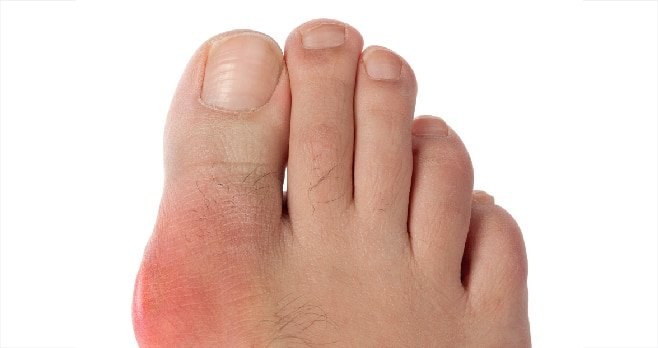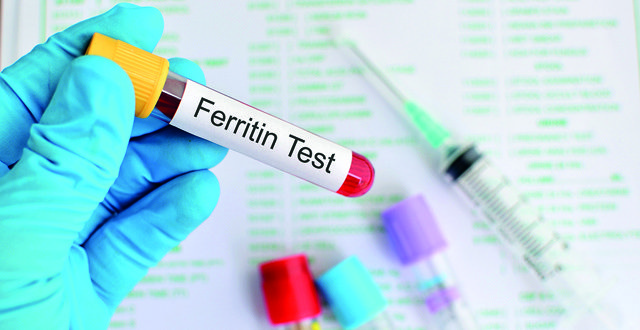The annual global prevalence of diabetes is increasing; currently it is estimated that one-in-11 adults in the European region have diabetes, which is associated with increased morbidity and mortality.
Studies have shown that hyperglycaemia and hypertension are directly correlated with the development and progression of chronic kidney disease in patients with type 2 diabetes. It is estimated up to 30 per cent of patients with type 2 diabetes will develop chronic kidney disease.
Chronic kidney disease in association with type 2 diabetes represents an emerging economic and mortality burden; currently 12 per cent of global healthcare expenditure ($727 billion) is spent treating diabetes and associated complications. Patients with type 2 diabetes and chronic kidney disease experience a higher standardised mortality rate than age-matched peers without these conditions.
Best practice Kidney Disease Improving Global Outcomes (KDIGO, 2013) recommendations indicate the early detection and management of chronic kidney disease in populations with type 2 diabetes is essential in order to achieve improved clinical outcomes and patient quality-of-life. However, this operates on the premise that healthcare providers have the resources and skills required to provide chronic kidney disease care for patients with type 2 diabetes. Contemporary literary discourse indicates opportunities to implement early intervention strategies may be missed due to a variety of factors which include; a lack of healthcare provider awareness of chronic kidney disease management, finite resources and delayed referral or access to specialist nephrology services.
The Department of Health Statement of Strategy (2016-2019) indicates healthcare delivery is changing to adopt models of care that are integrated and delivered at the lowest level of complexity consistent with patient safety. This has in turn led to an emphasis on providing care for the increasing number of patients with type 2 diabetes in primary care (eg, development the diabetes ‘cycle-of-care’ programme (HSE, 2017)).
<h3 class=”subheadMIstyles”>Presentation and diagnosis</h3>
Chronic kidney disease is defined as abnormalities of kidney structure or function present for more than three months, with implications for health. This includes all people with markers of kidney damage and those with a glomerular function rate (GFR) <60mls/min/1.73m<sup>2</sup> on at least two occasions separated by a period of not less than 90 days, with or without the following markers of kidney damage:
<p class=”listBULLETLISTTEXTMIstyles”>Albuminuria: ACR >3mg/mmol.
<p class=”listBULLETLISTTEXTMIstyles”>Urine sediment abnormalities.
<p class=”listBULLETLISTTEXTMIstyles”>Abnormalities detected by histology.
<p class=”listBULLETLISTTEXTMIstyles”>Structural abnormalities detected by imaging.
<p class=”listBULLETLISTTEXTMIstyles”>History of kidney transplantation.
Chronic kidney disease has five stages (<strong>Figure 1</strong>) ranging from stage G1 (normal kidney function) to stage G5 (end-stage renal disease/kidney failure).
While a diagnosis of chronic kidney disease can be made when eGFR is <60ml/min/1.73m<sup>2</sup>, if the eGFR is >60ml/min the following laboratory/clinical features are required to appropriately apply the label of CKD:
<p class=”listBULLETLISTTEXTMIstyles”>Persistent microalbuminuria /proteinuria/haematuria (after exclusion of other causes, eg, urological disease).
<p class=”listBULLETLISTTEXTMIstyles”>Structural abnormalities on ultrasound/radiological testing, eg, polycystic kidney, reflux nephropathy, biopsy proven glomerulonephritis.
<p class=”listBULLETLISTTEXTMIstyles”>eGFR of 60-89/ml/min/1.73m<sup>2</sup>: Without one of the above markers patients should not be considered to have chronic kidney disease and should not be subjected to further investigation.
Patients may have chronic kidney disease and albuminuria. In the context of chronic kidney disease an elevated ACR is one of the earliest clinical indicators of changes within the cellular structure of the nephron and is an independent risk factor directly linked to mortality and morbidity. To detect albuminuria the use of the ACR is recommended in preference to protein creatinine ratio (PCR). ACR has greater sensitivity than PCR for lower levels of proteinuria enabling earlier detection and management and is the recommended method for people with diabetes. An early morning urine sample is recommended for laboratory quantification of ACR, which is quantified in the following three categories (<strong>Figure 1</strong>):
<p class=”listBULLETLISTTEXTMIstyles”>A1: <3mg/mmol (normal to mildly increased).
<p class=”listBULLETLISTTEXTMIstyles”>A2: 3-30mg/mmol (moderately increased).
<p class=”listBULLETLISTTEXTMIstyles”>A3: >30mg/mmol (severely increased).
Falsely elevated ACR values can occur which influence the appearance of albumin in the urine and these include: Metabolic perturbations such as ketosis and hyperglycaemia and haemodynamic factors, eg, exercise, dietary protein intake, diuresis, presence of a urinary tract infection and semen. The UK National Institute for Health and Care Excellence (NICE 2014) recommends that point of care reagent strips should not be used to identify proteinuria unless specifically capable of measuring albuminuria at low concentrations and expressing the result as an ACR.
For the initial detection of proteinuria:
<p class=”listBULLETLISTTEXTMIstyles”>ACR between 3-70mg/mmol should be confirmed by a subsequent early morning sample.
<p class=”listBULLETLISTTEXTMIstyles”>If the initial ACR is 70mg/mmol or more, a repeat sample is not required.
<p class=”listBULLETLISTTEXTMIstyles”>Regard a confirmed ACR of 3mg/mmol or more as clinically important proteinuria.
<p class=”subheadMIstyles”>Chronic kidney disease progression
In patients with known chronic kidney disease consider that an eGFR decline of 5ml annually or 10ml over a five-year period may require specialist nephrology referral (patient and history dependent). It is recommended to obtain a minimum of three eGFR estimations over a period of not less than 90 days. Also consider the patients usual baseline which may be impacted by illness and dehydration. International evidence suggests an expected annual decline in renal function (GFR) of 1.4-to-4.6ml/min. Patients may be at risk for the development of end stage renal disease (ESRD) if they experience either of the following:
<p class=”listBULLETLISTTEXTMIstyles”>A sustained decrease in GFR of 25 per cent or more over 12 months or;
<p class=”listBULLETLISTTEXTMIstyles”>A sustained decrease in GFR of 15ml/min/1.73m<sup>2</sup> or more over 12 months .
<h3 class=”subheadMIstyles”>How to manage a new finding of a reduced GFR</h3>
In instances where there is a new finding of a reduced eGFR, it is recommended to repeat eGFR within two weeks to exclude other causes of acute renal function deterioration, eg, acute kidney injury. If a new antihypertensive agent has been initiated or a current antihypertensive agent has been increased, elevations in creatinine may occur, an up to 20 per cent increase in the level of creatinine is acceptable.
It is also recommended to undertake a myeloma screen to outrule any underlying aetiology that may be contributing to the reduction of kidney function. If the renal function continues to decline it is recommended to refer patients who meet the following criteria for renal ultrasound and specialist nephrology review.
Offer a renal ultrasound scan to all people with chronic kidney disease who:
<p class=”listBULLETLISTTEXTMIstyles”>Have accelerated progression of their disease.
<p class=”listBULLETLISTTEXTMIstyles”>Visible or persistent invisible haematuria.
<p class=”listBULLETLISTTEXTMIstyles”>Symptoms of urinary tract obstruction.
<p class=”listBULLETLISTTEXTMIstyles”>Family history of polycystic kidney disease (>20 years old).
<p class=”listBULLETLISTTEXTMIstyles”>eGFR < 30ml/min/1.73m<sup>2</sup>.
<p class=”listBULLETLISTTEXTMIstyles”>Considered by a nephrologist to require a renal biopsy.
It is recommended to refer patients who develop the following for specialist nephrology review:
<p class=”listBULLETLISTTEXTMIstyles”>eGFR <30ml/min/1.73m<sup>2</sup> (with/without diabetes).
<p class=”listBULLETLISTTEXTMIstyles”>ACR 70mg/mmol or more, unless caused by diabetes and treated.
<p class=”listBULLETLISTTEXTMIstyles”>ACR 30mg/mmol or more with haematuria.
<p class=”listBULLETLISTTEXTMIstyles”>Sustained decrease in eGFR of 25 per cent or more in 12 months.
<p class=”listBULLETLISTTEXTMIstyles”>GFR reduction of 15ml/min/1.73m<sup>2</sup> or more in 12 months.
<p class=”listBULLETLISTTEXTMIstyles”>Suboptimal blood pressure on at least four antihypertensive drugs at maximum dose.
<p class=”listBULLETLISTTEXTMIstyles”>Known/suspected genetic causes of chronic kidney disease/renal artery stenosis.
<p class=”listBULLETLISTTEXTMIstyles”>People with chronic kidney disease and renal outflow obstruction: refer to urological services, unless urgent nephrology intervention is required; eg, hyperkalaemia, severe uraemia, acidosis, fluid overload.
Chronic kidney disease may present with additional features such as haematuria and anaemia, which require timely and appropriate management.
<h3 class=”subheadMIstyles”>How to detect and manage haematuria</h3>
Haematuria may develop in individuals with chronic kidney disease and or elevated ACR. NICE (2014) recommend reagent strips (urinalysis), not urine microscopy, should be utilised to detect haematuria and further evaluation is required if blood 1+ or more is present on urinalysis.
Haematuria may be invisible and transient or persistent. To differentiate between persistent invisible haematuria and transient haematuria, two-out-of-three positive reagent strip tests for the presence of blood are regarded as confirmation of persistent invisible haematuria. Persistent invisible haematuria requires prompt referral and investigation for urinary tract malignancy in appropriate age groups and with annually follow-up to include repeat testing for haematuria, proteinuria/albuminuria, eGFR and blood pressure monitoring.
<h3 class=”subheadMIstyles”>Anaemia and chronic kidney disease</h3>
Many patients with chronic kidney disease develop a specific anaemia which presents in a normocytic normochromic pattern (red cell has a normal size and colour), usually when GFR <35ml/min. Anaemia may develop for a variety of factors including; diminished erythropoietin production by the kidney, shortened red cell survival in uraemia, iron, B12 and folate deficiencies. Consider investigating and managing anaemia in people with chronic kidney disease when their haemoglobin (Hb) falls below 11g/dl.
Current evidence indicates there is no clinical benefit in correcting mild anaemia (Hb 10-12g/dl) with erythropoietin stimulating agents (ESA), while the decision to treat more severe anaemia with ESA is patient and history dependent. Traditionally serum ferritin levels have been utilised to measure available iron required for effective red cell production. As ferritin is a reactive phase protein, elevated levels may occur during periods of illness and results should be interpreted accordingly.
Transferrin saturation rate (Tsat) is recommended as a reliable method to measure the level of available iron for effective erythropoiesis. Tsat represents the ratio of serum iron and total iron binding capacity expressed as a percentage. A Tsat level of less than 20 per cent is inadequate for effective erythropoiesis and thus a normocytic normochromic anaemia may develop. Anaemias that are not normocytic and normochromic are not associated with chronic kidney disease and require prompt assessment. Offer oral iron therapy to all patients with chronic kidney disease when Tsats are under 20 per cent. If tolerance issues occur or there is a failure to respond to oral iron therapy after a three-month period of treatment, intravenous iron may be required.
<h3 class=”subheadMIstyles”>In summary, targets for care</h3>
Evidence indicates type 2 diabetes is associated with an increased prevalence of chronic kidney disease and albuminuria. Prompt identification and management of reduced renal function in cohorts with type 2 diabetes enables timely and effective management strategies to be adopted when treatment has the potential to be more effective in terms of preserving renal function (Poncelas <em>et al</em>, 2013). Chronic kidney disease is a progressive condition and the seminal UKPDS (1998) and ADVANCE (2008) randomised controlled trials have demonstrated how improved glucose control and hypertension management is associated with preservation of kidney function and albuminuria reduction. NICE recommends the following targets for patients with type 2 diabetes and chronic kidney disease:
<p class=”listBULLETLISTTEXTMIstyles”>Chronic kidney disease and type 2 diabetes: Blood pressure <140/90mmHg (target range 120-139 mmHg).
<p class=”listBULLETLISTTEXTMIstyles”>Chronic kidney disease and type 2 diabetes with ACR 70mg/mmol or more: Blood pressure <130/80mmHg.
<p class=”listBULLETLISTTEXTMIstyles”>HBA1C: <53mmols/mol (age/patient dependent).
<p class=”listBULLETLISTTEXTMIstyles”>Total cholesterol: <4.0.
<p class=”listBULLETLISTTEXTMIstyles”>Renal anaemia screen: Urea and electrolytes, FBC: (aim to achieve Hb: 9.5-12g/dl, patient and activity dependent), Tsats>20 per cent, B12, ferritin, folate, liver and thyroid function.
<p class=”listBULLETLISTTEXTMIstyles”>Parathyroid hormone (PTH) and vitamin D (stage 4 chronic kidney disease onwards).<strong></strong>
<p class=”referencesonrequestMIstyles”><strong>References on request</strong>









Leave a Reply
You must be logged in to post a comment.